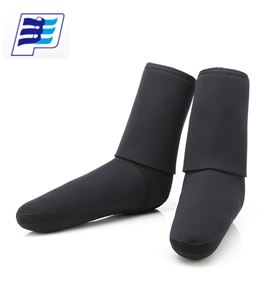Mountain bike suspension forks vary massively when it comes to travel, shock damping ability, stiffness and weight – and that’s before we even get onto price, which can run into hundreds or even thousands of pounds.
That means it’s important to know what to look for when buying a new fork.
What to Think About When Buying A Fork?
- Travel
Mountain biking is a very diverse sport and there are suspension forks designed for every type of bike: cross-country bikes generally offer 80 to 120mm of suspension travel, trail bikes range from 120 to 140mm, enduro and all-mountain bikes have between 150 to 170mm, and gravity/downhill rigs go from 180 to 210mm.
The first question is how much travel will work best for you? All other things being equal, the further your fork can move, the more smoothly it can absorb impacts. But longer-legged forks have to be heavier to cope with the extra leverage and bigger impacts.
An extra 10mm of travel will tip head and seat angles back by roughly one degree, which makes steering slower and more stable. Running too long a fork can also overstress your frame and void the warranty, so always check what the recommended travel is for your bike before upgrading. In general, it’s best to replace your existing suspension fork with one with that offers a similar amount of suspension.
That said, many forks have travel-adjust features. These either let you drop the travel in small steps to tweak the bike’s geometry and handling to taste, or crush it down dramatically to give a shorter, stiffer fork.
- Budget
The next question is budget. Sadly, there aren’t many budget forks that deliver a smooth suspension stroke and stiff, screw-through axle structure without weighing a ton. Damping circuits are also simpler on cheaper models, which mean less control in high impact or multiple-hit situations.
There’s a clear progression in standards of control and consistency up to around £400 / US$670, but after that the waters get a lot murkier and it’s time to be honest about yourself and your riding. The overall performance and reliability of basic forks has definitely improved though.
- Control
The more travel you have, the harder it is to control – which makes damping control paramount. You should at least get adjustable rebound damping so the fork returns smoothly to its natural ride height, rather than bouncing back up with a clang. More advanced forks also have compression damping to help the spring slow down and absorb the impacts.
Top-end forks split compression damping into two separate circuits – low speed for controlling loads such as braking, cornering or movement under pedaling, or high speed for controlling sudden large loads such as square-edged rocks or landings. Having lots of damping adjustment is only useful if you know what you’re doing with it and have the time to tune it correctly though, so be honest rather than pretending that you’ll become a pro suspension fork tuner overnight.
If you’re likely to plug the fork in, do the minimum setup tweaking and then ride it day in, day out without servicing it then you’ll want a simple but totally reliable unit. If you clean and care as much as you ride, then you can get something a bit needier. If you’re a real fork fettler who’ll spend hours with a shock pump and a safe cracker’s level of dial turning dexterity to find your suspension sweet spot then it’s worth having a full range of adjustments to exploit.
- Strength / Weight
As well as travel and tuning, you need to think about how much strength you really need, or you’ll just be carrying extra weight you’ll never use. Light, tight forks will suit climbers and other cross-country riders, while super-plush traction Hoovers are worth the extra weight for progressive envelope pushers. Getting the right balance is really important. Fork strength is hard to gauge though, so go by the manufacturer’s recommendations.
- Compatibility
Most modern suspension forks use tapered steerer tubes which measure 1.5in at the crown and 1.125in at the stem.
There are also three different axle standards to consider: 9mm quick-releases can still be found on some lower end forks, though the majority of cross-country and trail forks now use 15mm thru-axles. Longer travel suspensions forks for enduro and downhill frequently use 20mm thru-axles.
If you have any interest in much more bicycle front forks, I recommend you to visit BEV International Corp. – they are the professional bike parts and accessories manufacturer in Taiwan. You can find kinds of bicycle frames, front forks, saddles, wheel sets there. To get more information of front fork series, welcome to check out their website and feel free to contact with BEV.
Article Source: https://www.bikeradar.com/gear/article/mountain-bike-suspension-forks-a-buyers-guide-55/

